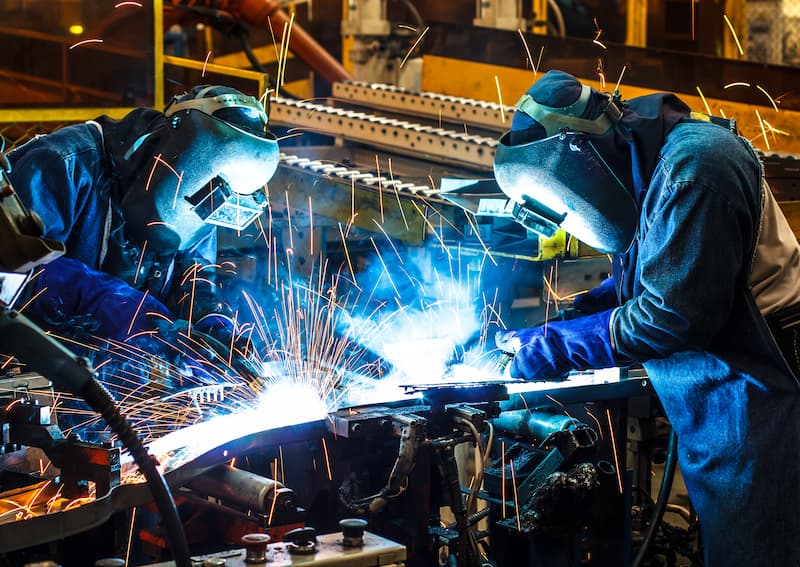Developing a Welding WPS: Step-by-Step Directions for Professionals
Developing a Welding WPS: Step-by-Step Directions for Professionals
Blog Article
The Ultimate Overview to Welding WPS Procedures: A Detailed Overview for Welders
In the complex world of welding, Welding Procedure Specifications (WPS) offer as the backbone of guaranteeing high quality, consistency, and safety in welding operations (welding WPS). As we delve right into the different parts of a WPS and check out the intricacies of credentials and qualification, we will certainly discover the essential duty these treatments play in the world of welding.
Value of WPS Procedures
Comprehending the relevance of Welding Procedure Requirements (WPS) treatments is important for making certain the high quality and honesty of bonded frameworks. WPS treatments serve as a roadmap for welders, outlining the essential actions, specifications, and products called for to attain an audio weld. By sticking to WPS standards, welders can make certain consistency in their work, leading to structurally audio and trustworthy welds.
One of the primary reasons why WPS treatments are important is their duty in preserving weld high quality and honesty. Adhering to the specified welding specifications and techniques detailed in the WPS aids stop flaws such as porosity, cracking, or incomplete combination, which can jeopardize the stamina and longevity of the weld.

Components of a WPS
A Welding Treatment Requirements (WPS) normally consists of crucial elements that detail the specific needs for performing a weld, ensuring uniformity and high quality in the welding procedure. The key parts of a WPS include necessary variables such as base metals, filler steels, preheat and interpass temperature levels, welding processes, protecting gases, welding settings, and post-weld heat therapy demands.
Base steels refer to the products being joined, while filler steels are made use of to fill up the void between the base metals during welding. The welding procedure outlines the particular method to be utilized, whether it's gas steel arc welding (GMAW), secured steel arc welding (SMAW), or an additional technique. Welding positions define the orientations in which welding can be performed.

Credentials and Certification
Having established the important elements of a Welding Treatment Specification (WPS), the focus currently changes towards the essential elements of certification and accreditation in welding techniques.

Accreditation, on the other hand, is the official acknowledgment of a welder's qualifications by an appropriate qualification body or organization. Welding certifications are normally based on the particular welding procedures, materials, and settings a welder is certified to collaborate with. Holding a valid welding accreditation shows that a welder meets industry requirements Our site and is experienced to execute welding jobs to the called for requirements.
Developing a WPS
To establish a Welding Treatment Spec (WPS) that fulfills sector standards, careful consideration of welding procedures, materials, and functional specifications is necessary (welding WPS). The primary step in developing a WPS is to determine the welding process to be made use of, such as gas steel arc welding (GMAW) or secured metal arc welding (SMAW) Once the welding process is figured out, the following essential element is choosing the proper materials, taking into consideration variables like base steel kind, thickness, and joint design. Operational parameters such as welding current, voltage, travel rate, and protecting gas make-up must also be diligently defined in the WPS.
Applying and Checking WPS
Upon finalizing the detailed Welding Procedure Specification (WPS) that meticulously details welding procedures, materials, operational parameters, and quality assurance steps, the focus changes to properly carrying out and keeping an eye on the recognized procedures. Implementation involves making certain that all welders entailed in the project are acquainted with the WPS and follow it carefully throughout the welding process. Effective application and surveillance of the WPS are important for guaranteeing the integrity, strength, and security of the bonded joints, inevitably adding to the overall success of the welding job.
Conclusion
In verdict, understanding and adhering to Welding Procedure Requirements (WPS) is important for welders to make certain top quality, uniformity, and safety in their work. By understanding the elements of a WPS, getting appropriate credentials and qualifications, producing detailed treatments, and implementing and monitoring them successfully, welders can boost their abilities and efficiency in welding practices. Complying with WPS procedures is vital for creating top quality welds and meeting market requirements.
In the complex world of welding, Welding Procedure Specifications (WPS) serve as the backbone of making certain quality, uniformity, and safety and security in welding procedures. The welding procedure describes the details technique to be used, whether it's gas steel arc welding (GMAW), shielded steel arc welding (SMAW), or another approach.To create a Welding Treatment Spec (WPS) that satisfies sector standards, mindful factor to consider of welding processes, products, and functional criteria is essential. The very first step in developing a WPS is to identify the welding process to be used, such check it out as gas steel arc welding (GMAW) or secured steel arc welding (SMAW)Upon completing the thorough Welding Procedure Specification (WPS) that diligently information welding processes, products, functional parameters, and quality guarantee steps, the focus shifts to efficiently carrying out and keeping track of the well-known procedures.
Report this page